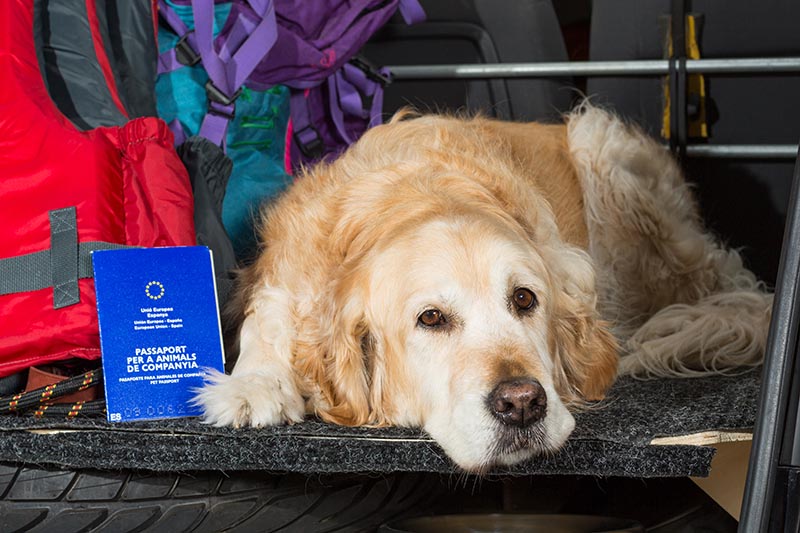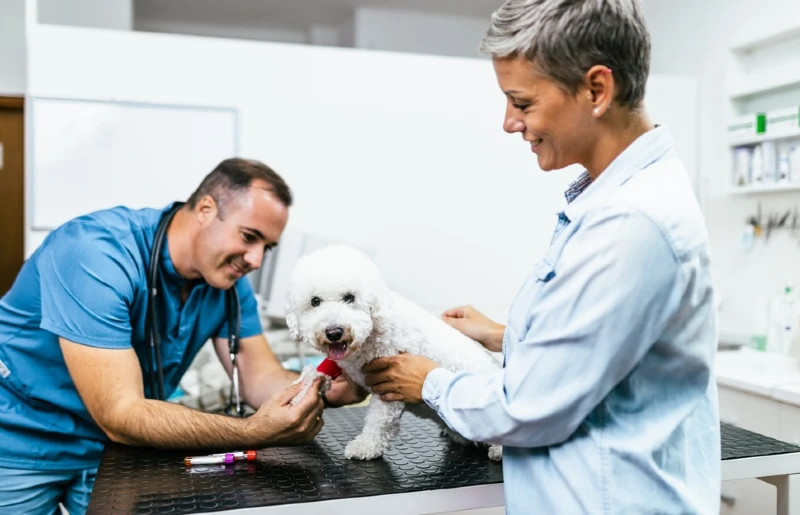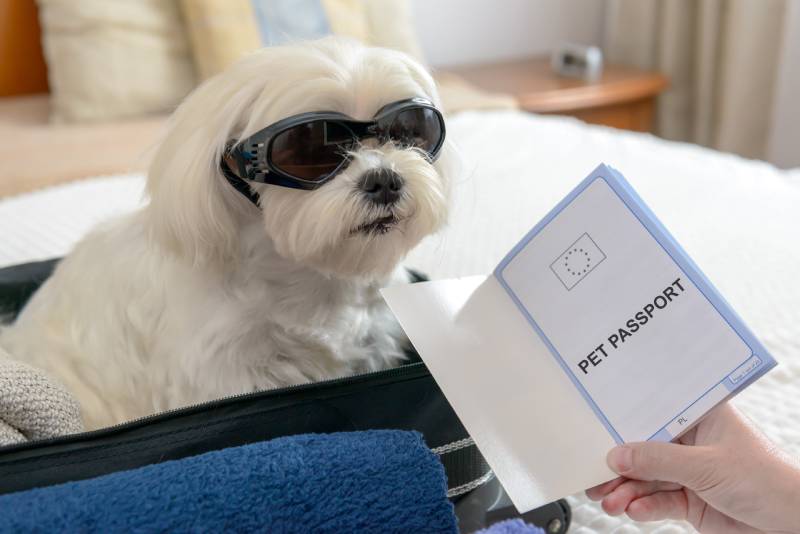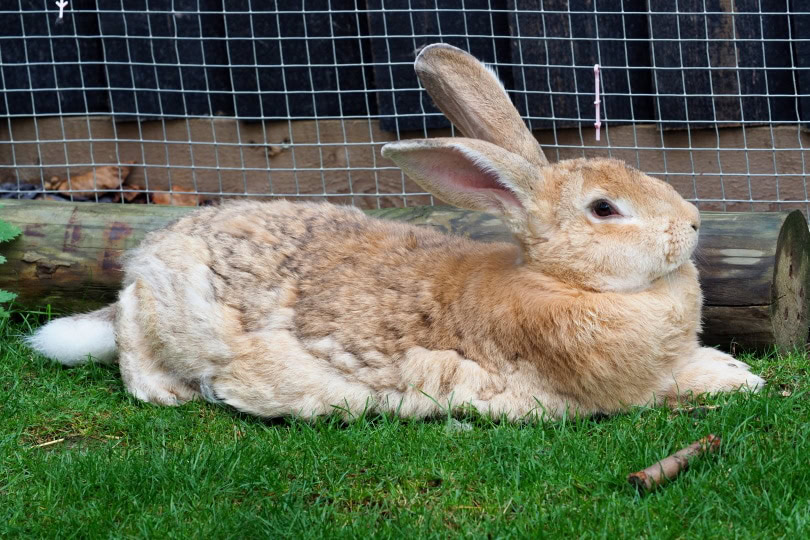Click to Skip Ahead
A lot changed in January 2021, when the United Kingdom left the European Union (EU), including the documentation you need to travel from the UK to the rest of the EU with your pet. Thankfully, pets from the UK aren’t required to go into quarantine upon arrival in one of the EU countries, but they need to have an Animal Health Certificate.
Before Brexit, a pet passport allowed UK pets to travel freely with their owners to and from the rest of the EU. The passport showed that the pet was up to date on all the vaccinations, able to travel, and microchipped. However, it’s no longer valid post-Brexit.
Requirements have also changed for pets traveling into the UK from other countries. Read on below to find out more.

How Does an Animal Health Certificate Differ From a Pet Passport?
Since Brexit, the EU has moved the UK from its status in the Pet Travel scheme of “Part 1 listed” to “Part 2 listed,” meaning that pet passports are no longer valid for pets traveling from the UK to the rest of the EU. They now require an Animal Health Certificate, which has more requirements and restrictions attached to it than the old pet passport scheme.
Instead of having one pet passport that shows your pet’s vaccination record and proof of microchipping, an Animal Health Certificate shows details about your pet’s microchip, records of their vaccinations and tapeworm treatment, and information on their age, breed, and size. It will also have your details as the owner of the pet. You can only apply for an Animal Health Certificate once your pet is 15 weeks old.
Another change is that UK pet owners can no longer freely travel with their pets in and out of the EU since the Animal Health Certificate is only valid for 4 months. The requirements also involve getting your pet vaccinated at least 21 days before your trip, and it can only be issued by a vet within 10 days before you leave.


How to Get an Animal Health Certificate
Although your next trip out of the UK and into the EU will require a lot more planning, getting an Animal Health Certificate isn’t complicated.
1. Get Your Pet Microchipped
If your pet isn’t microchipped, it is the first place to start on your road to getting an Animal Health Certificate, as one won’t be issued to you until they have the procedure. A microchip is required for immigration officers to link your pet to the documents you’ve presented to them.

2. Get Them Vaccinated
You’ll need to get your pet up to date on all their vaccinations at least 21 days before your trip, so you’ll need to plan your vet visit carefully. Be sure to tell your vet where you’re traveling so that they can get the appropriate vaccinations.
3. Go Back to The Vet
Twenty-one days after your pet’s vaccinations, you’ll need to return to the vet to get your Animal Health Certificate. However, the certificate must be issued within 10 days before your arrival. It will not be accepted if it was issued to you by your vet longer than 10 days prior to your arrival in the EU.
Your Animal Health Certificate is only valid if an official veterinarian issued it.


Frequently Asked Questions
Has Anything Changed for Pets Entering the UK from the EU?
No new documentation is needed for pets traveling from the EU into the UK, as they still have “Part 1 listed” status in the Pet Travel scheme. This means that EU pets can continue to travel to and from the UK with a pet passport, and an Animal Health Certificate isn’t necessary.
How Can My Pet Get into The UK from Other Countries?
The type of documentation you’ll need for your pet to travel into the UK will differ depending on where you’re traveling from. If you’re traveling from a Part 1 listed country 1, such as Norway or Iceland, you’ll need a pet passport, which you can get from your vet. It’ll show your pet’s identity, vaccination records, and rabies blood test results.
If you’re traveling from a Part 2 listed country, such as the USA 2 or Australia, you’ll need a Great Britain pet health certificate since they don’t accept pet passports or Animal Health Certificates from Part 2 listed countries. This documentation is similar to an Animal Health Certificate; a licensed vet must complete it within 10 days of leaving for the UK. Your pet will need to be microchipped, receive their rabies vaccination, and get tapeworm treatment if they’re a dog.
If your documents do not have the correct information or don’t meet the requirements upon arrival in the UK, your pet may have to undergo a quarantine period. Some dog breeds are banned in the UK, so it’s crucial to look through the list to ensure your dog isn’t one of them.
Can I Travel With All My Pets?
A family holiday with all your pets sounds like a wonderful time. However, if you have more than five pets you plan on taking into the EU, you may have to change your plans. One owner can only apply for five Animal Health Certificates and no more. However, there is an exception for those training for a competition, sporting event, or show. You’ll need to provide proof of this by showing the registration for the event.


Before You Travel
It is fun to travel with your pet, but it’s important to know that the journey can be very stressful for them. Most pets that have traveled since they were young should be fine. However, if your pet is highly anxious and may not do well in a new environment or around different people, consider leaving them home with a family member or friend.
If your pet is comfortable with traveling, make sure you follow the requirements of the airline or mode of transportation you’ll be using. Each airline has different requirements about pet safety and carriers, etc. It is also important to check with the hotel to determine if it’s pet-friendly before making reservations and purchasing tickets.
Before you leave the UK, check with your pet insurance to see if it covers emergency vet bills abroad; some policies include this benefit, and some don’t. In some cases, your policy may state that your pet will only be able to receive vet care abroad in certain countries and not in others.


Conclusion
If you’re traveling from the UK to the EU, you can no longer use a pet passport and must get an Animal Health Certificate. The same is true for pets traveling from other countries into the UK that don’t have “Part 1 listed” status. The change occurred at the start of 2021 when the UK left the EU and was dropped to “Part 2 listed” in the Pet Travel scheme.
The change has caused more paperwork and planning for pet owners, but getting the correct documentation isn’t complicated.
- Related Read: How Much Does a UK Pet Passport Cost? Price Guide
Featured Image Credit: Monika Wisniewska, Shutterstock











2 Responses
I love it
Hello Letty,
thank you very much for your nice feedback. We are glad you found our post helpful!